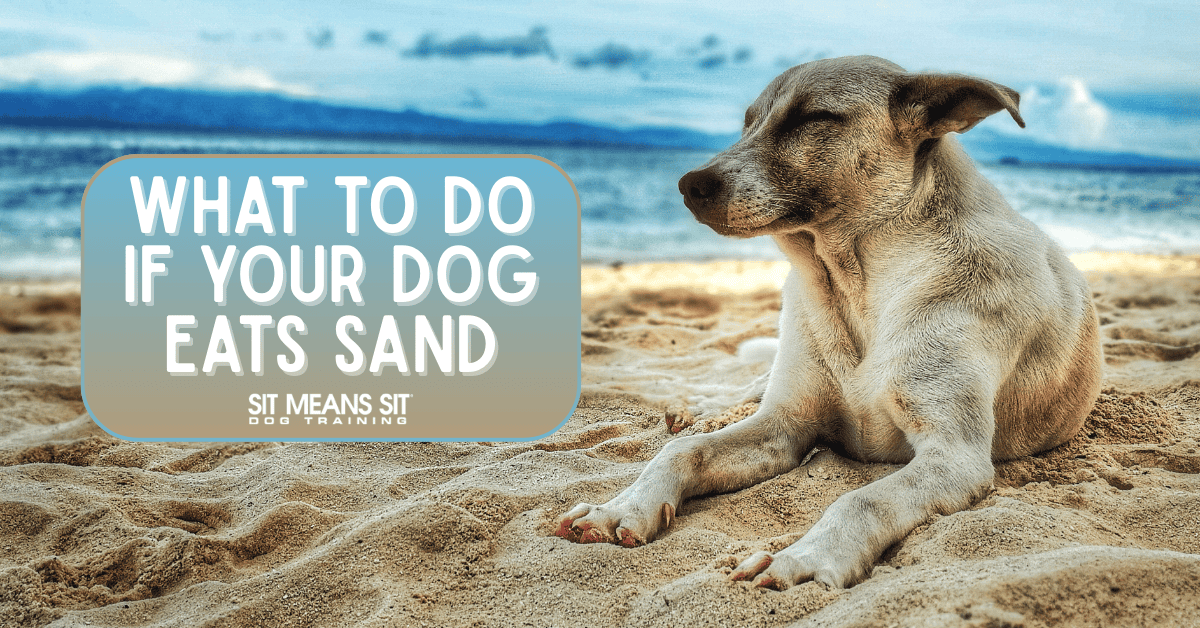Spending the day at the beach with your dog can be the perfect way to enjoy some sun and fresh air. But while your pup is busy digging holes, chasing waves, or gobbling up snacks, there’s one thing many pet parents don’t expect: sand ingestion.
If your dog eats sand, it’s not just a quirky beach habit. It can be dangerous and even life-threatening if left unaddressed. Here’s what you need to know about why dogs eat sand, what risks it poses, and what you should do if it happens.
Why Do Dogs Ingest Sand
Dogs can eat sand on purpose or by accident. It often happens when they’re:
- Fetching balls or toys that are covered in sand
- Digging and licking their paws afterward
- Eating food or treats dropped on the beach
- Drinking from salty or sandy puddles
A little sand might not seem like a big deal, but even small amounts can cause problems. The risk depends on how much sand your dog ingests.
The Dangers of Doggy Sand Ingestion
Sand impaction is the biggest concern. This is a serious condition where sand builds up and causes a blockage in your dog’s intestines. It can be painful, dangerous, and often requires emergency treatment.
Symptoms of sand impaction include:
- Vomiting
- Loss of appetite
- Straining or painful bowel movements
- Abdominal pain
- Diarrhea or constipation
- Lethargy
- Signs of dehydration
In severe cases, sand impaction can damage the intestinal lining or cause more extensive digestive issues.
What to Do if Your Dog Eats Sand
1. Assess how much sand was likely ingested. If your dog only licked a sandy ball or got a mouthful while digging, they may be okay with mild support. But if they swallowed a large amount of sand, especially intentionally, you need to take action fast.
2. Encourage hydration. For small amounts of sand, help flush it out by giving your dog plenty of water. Offering mild, dog-safe broth can also encourage drinking and support hydration.
3. Watch closely for symptoms. Keep an eye on your dog for the next 24 to 48 hours. Look for any of the symptoms listed above. If you notice vomiting, lack of appetite, or abdominal pain, call your vet immediately.
4. Never leave sand ingestion untreated. Even if your dog seems okay at first, sand can settle in the intestines and cause problems later. If your dog shows any signs of distress or has ingested a large amount of sand, it’s safest to get veterinary advice right away.
If your dog has eaten a large amount of sand or is showing even one symptom of impaction or distress, it’s time to call your vet. Quick action can prevent serious complications and save your pup from a painful situation.
Pro Tips for Future Beach Trips with Fido
Trips to the beach can still be fun with a bit of preparation and extra care.
- Bring fresh water and a bowl to prevent your dog from drinking from puddles or the ocean.
- Avoid throwing toys that collect sand. Use rubber balls or floating toys made for water play.
- Give your pup breaks and keep an eye on how much sand they’re exposed to.
- Pack a cleanup kit with water, wipes, and a towel to rinse off paws and mouths.
A beach day should be full of fun, not fear. While sand might seem harmless, it can become a real problem if your dog ingests too much. The key is to stay alert, be prepared, and know when to get help.
Next time you head to the shore, keep these tips in mind so you and your furry friend can enjoy the waves without worry.

